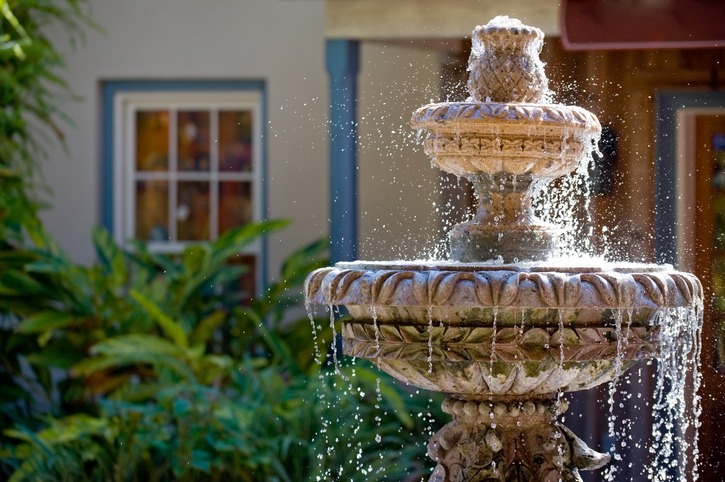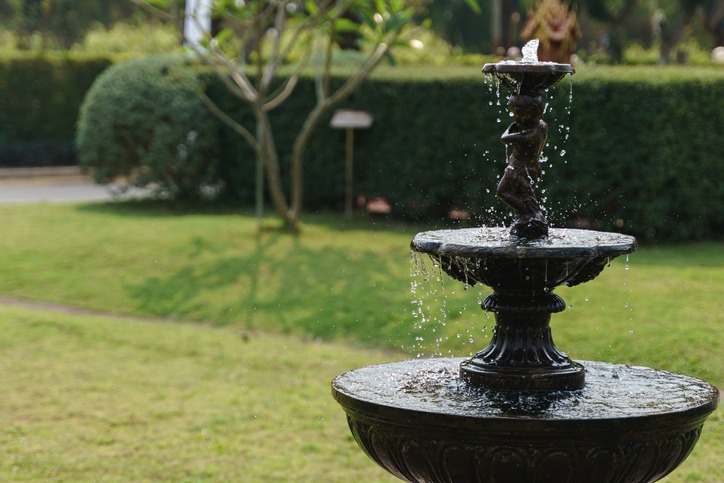When you think of an outdoor water fountain, the picture that may probably first come to mind are those large, concrete fountains outside a museum or government and business buildings. However, those kinds of outdoor fountains are also used inside gardens of private residences. But not all water fountains must be large and intricately carved with sculptures. It actually comes in a variety of sizes and shapes and is made of different materials.
A water garden in your yard or garden makes your space look elegant and impressive. It enhances the beauty of your property.
If you want to consider putting up a new water fountain in your outdoor space, here are some things you need to know:
Benefits of Having a Water Fountain
If you have extra money to spare to renovate or prettify your outdoor area, an outdoor water fountain can be a great investment. It can offer you benefits in the long run if it’s maintained properly.
1. Serves as an attractive decoration
It takes a lot of effort, resources, and work to keep up with landscaping around a house. Time and energy are often required to create a peaceful, perfect, and relaxing space so you can de-stress in your home’s outdoor space. But a water fountain offers a simple way to add beautiful outdoor décor to your garden, yard, or front lawn. With the variety of materials, shapes, sizes, and styles available in water fountains, you can quickly achieve a certain look and feel for your space.
2. Provides a calming and stress-reducing ambiance
You can use a fish pond or different kinds of plants to construct your quiet, peaceful, and meditative oasis. While the smell and looks of flowers can make your brain wander, adding a constant fixture like a water fountain can better enhance the ambiance of your garden. Besides their attractive appearance, water fountains can calm you by the soothing, trickling sounds of the water. Observing the water can have soothing and calming effects, which can easily enhance the serenity of your outdoor space.
3. Drowns out unwanted and unpleasant noises
Street noise can be distracting and annoying, especially if you just want to rest after a hectic day. But water fountains can help suppress the intensity of all these unpleasant noises. Outdoor fountains tend to be larger and louder than their indoor counterparts, so they can also mask or at least lessen the intensity of the noises around. This way, you can still stay relaxed in your garden or yard even if your neighbors are busy with their parties, gatherings, or other noise-making activities.
4. Attracts wildlife
Even if you’re not into birds, a water fountain can attract chirping birds, and it can be peaceful and awe-inspiring to watch them drink, bathe, or hang out by the water fountain. It can also attract butterflies, bees, and other wildlife to take your mind to a more relaxed state.
5. Acts as a natural humidifier
If you live in an area with relatively dry air, water fountains can add moisture. Most water pumps are also adjustable, so you can set the water’s flow to the speed and level that you like.
Types of Outdoor Fountains
Most people don’t think that there are different types of outdoor fountains, but here are the main ones: seasonal and year-round outdoor fountains.
1. Seasonal outdoor fountains
These types of fountains are the most common type. These fountains use re-circulated water to keep them working. But since it’s seasonal, it must be shut down during the winter in places that experience freezing temperatures. If the water is left during the cold winter and it freezes, the fountain’s mechanisms and structure can be damaged.
The two types of seasonal fountains include:
- Waterfall fountain – features a classical cascade of water.
- Pedestal fountain – comes with multiple tiers of flat, bird bath-shaped bowls where water cascades down from the bowl to the level underneath it.
2. Year-round outdoor fountains
Unlike seasonal fountains, year-round models can be used all year, including the coldest winter days, due to their built-in heating system.
The two types of year-round fountains include:
- Solar outdoor fountains – these have solar panels mounted to them to capture and use the energy from the sun to heat up the water.
- Electrical wall fountains – These fountains use electricity to heat the water, so they must be placed near an electrical outlet during the winter.
Factors to Consider in Choosing the Right Outdoor Fountain
An outdoor fountain can turn a drab and dull outdoor space into a relaxing area, but choosing the right fountain for your landscape décor is a combination of practicality and preference. Here are some factors you should consider when selecting the outdoor water fountain that’s right for you:
Fountain style
Do you want a classic-looking fountain or one that looks modern? A classic one is more formal and elegant in appearance, while a modern fountain can be more laid back and unique. Both styles come in different sizes, colors, and shapes. It’s always best to choose a fountain that at least matches the décor style of your exterior home.
Location
Fountains need to be placed in a proper location to make them a proper decoration for your yard. Larger fountains must not be placed against anything because you will need full access to them so you can clean them properly. Meanwhile, don’t place smaller fountains in areas with greenery or other objects that may block them. Keep it away from bushes and trees so it will catch fewer leaves, dirt, twigs, and branches, resulting in less frequent cleaning. When plant debris isn’t promptly cleaned out of the water, it can decay, making the water dirty and possibly clog your fountain’s pipes.
Power source
When choosing the type of outdoor fountain you want, it’s essential to consider the power source. These fountains come in different power options, but the two most common are hardwired and solar-powered.
Hardwired fountains draw on an electric power source to function. One may need to get a licensed electrician to have it installed since it’s considered an addition to your home’s electrical grid. Meanwhile, solar-powered outdoor fountains don’t require hardwiring because it only needs solar panels to provide enough power for the pump to function normally.
Different finishes
The fountain’s finish makes a huge difference in the way the fountain looks. How you care for and maintain the fountain also depends on the finish.
Concrete and stone fountains usually don’t need as much upkeep as others. Stone fountains tend to look a little more natural and can blend into the surroundings. Copper and bronze can add a beautiful contrast to the natural green outdoor surroundings, but it may need a little more care than other finishes.
Materials
Water fountain designs have advanced to the point that they are not available in a variety of different construction materials. These materials include but are not limited to:
- Cast stone – It’s one of the most common construction materials for fountains that can withstand the rigors of outdoor use.
- Fiberglass – While it’s not as durable as cast stone, fiberglass fountains come in various colors and finishes. Usually, fiberglass fountains are used indoors, but they are suitable for outdoor use with extra maintenance.
- Ceramic – These materials are forged out of 1000-degree ovens. It’s a little more delicate than other materials, so it’s most commonly used for patios and terraces.



